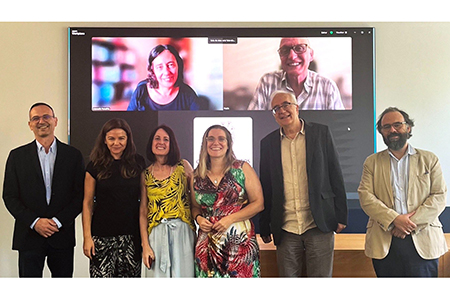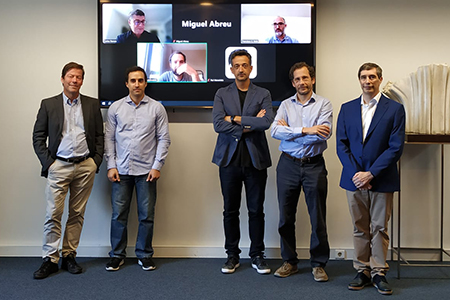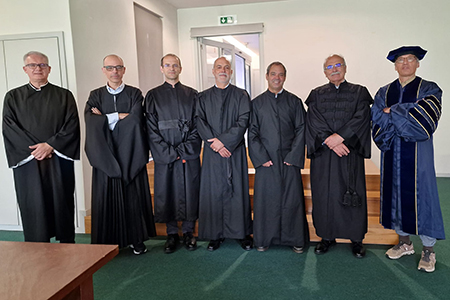Candidate
Ana Sofia Airosa Coelho de Passos Baptista
Date, Time and Location
July 23, 4:30, Sala de Atos FEUP
President of the Jury
António Fernando Vasconcelos Cunha Castro Coelho (PhD), Associate Professor with Habilitation, Departamento de Engenharia Informática, Faculdade de Engenharia da Universidade do Porto.
Members
Paulo Filipe Gouveia Monteiro (PhD), Full Professor, Departamento de Ciências da Comunicação, Faculdade de Ciências Sociais e Humanas, Universidade Nova de Lisboa;
Manuela Maria Fernandes Penafria (PhD), Associate Professor, Departamento de Artes da Faculdade de Artes e Letras, Universidade da Beira Interior;
Patrícia Nogueira da Silva (PhD), Assistant Professor, Departamento de Artes da Faculdade de Artes e Letras, Universidade da Beira Interior;
José Manuel Pereira Azevedo (PhD), Full Professor, Departamento de Ciências da Comunicação e da Informação, Faculdade de Letras, Universidade do Porto (Supervisor);
Hugo Daniel da Silva Barreira (PhD), Assistant Professor, Departamento de Ciências e Técnicas do Património, Faculdade de Letras, Universidade do Porto.
Abstract
Interactive Documentary offers innovative ways of telling reality-based stories, it reaches wider audiences more easily, and its availability, granted by the internet, seems durable. Nevertheless, we soon realised that their many possibilities came with as many obstacles. In addition to an even trickier production system, involving professionals with technological skills, a revenue model adapted to the web distribution, and the problem of technological obsolescence, interactive storytelling is a complex challenge. The openness inherent to interactivity affects how the story is constructed and experienced by the audience. Some interactive documentaries focus more on navigation rather than on the story. Narrative and storytelling are often neglected in research, as it tends to focus on the new affordances of interactivity. This journey aimed at understanding how interactive documentaries can balance the need for meaningful coherent stories with the advantage of interactivity and potential non-linearity and collaboration, through new narrative structures. We aim to support creators and researchers in the development and study of interactive documentaries, by identifying strategies and best practices regarding narrative and storytelling, based on literature review, case studies and interviews. For practical application, we propose a Categorisation Framework, illustrated with the case studies, which allows us to typify i-docs from the perspective of narrative and storytelling. Finally, we suggest a hands-on guide, comprising twelve tactics, for creators who aim to develop interactive documentaries with more meaningful and coherent narratives.
Keywords: Interactive Documentary; Narrative; Storytelling; Interactivity; Linearity; Categorisation.








